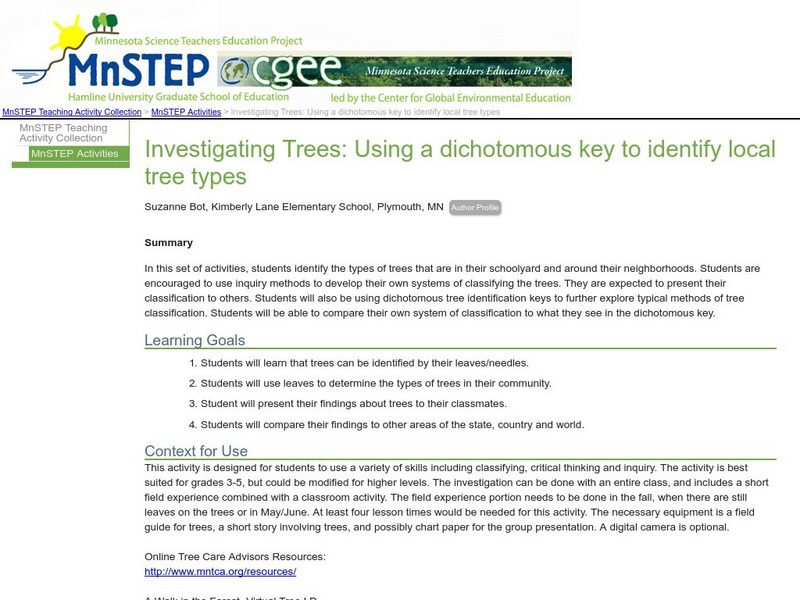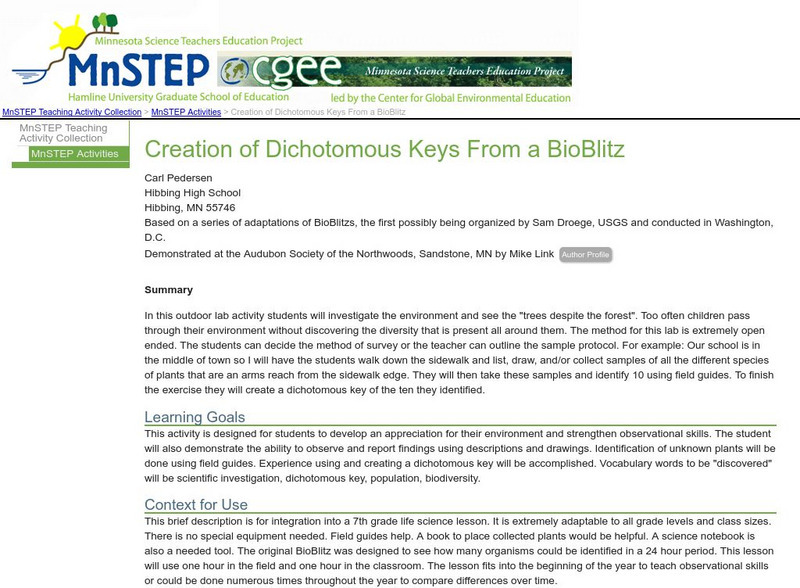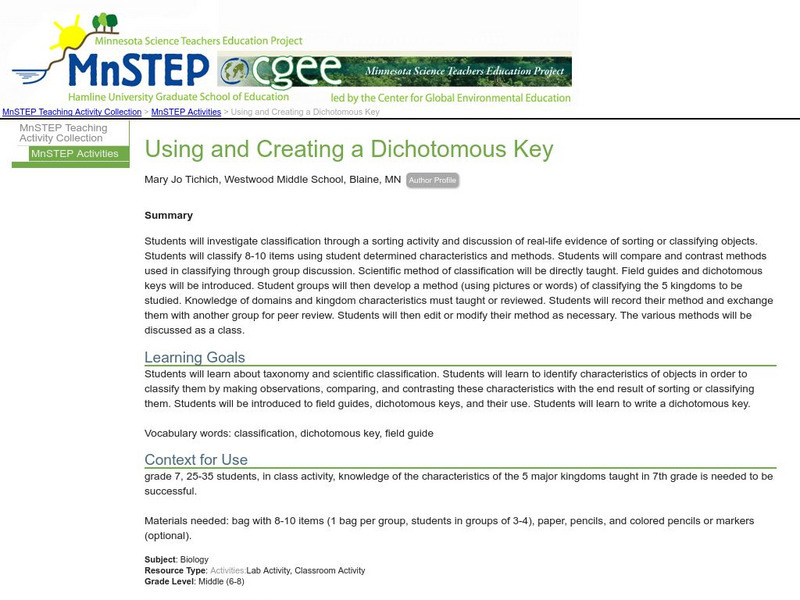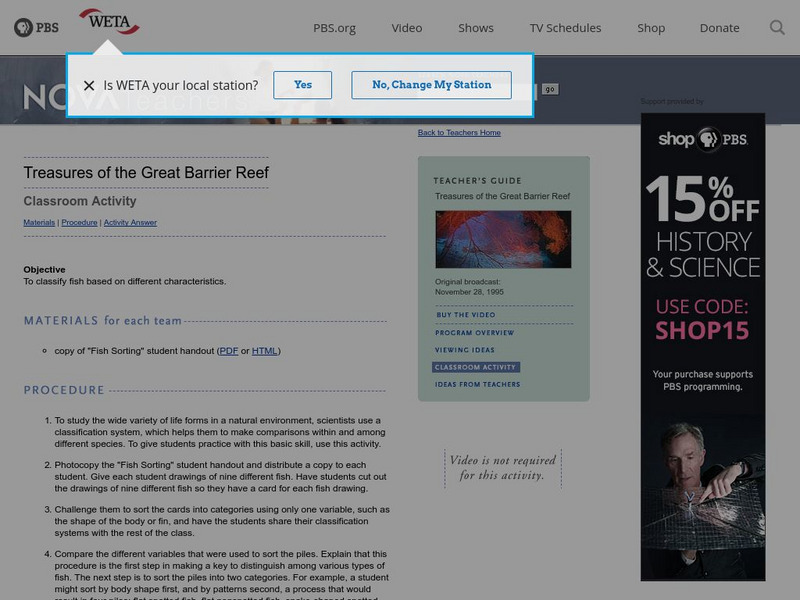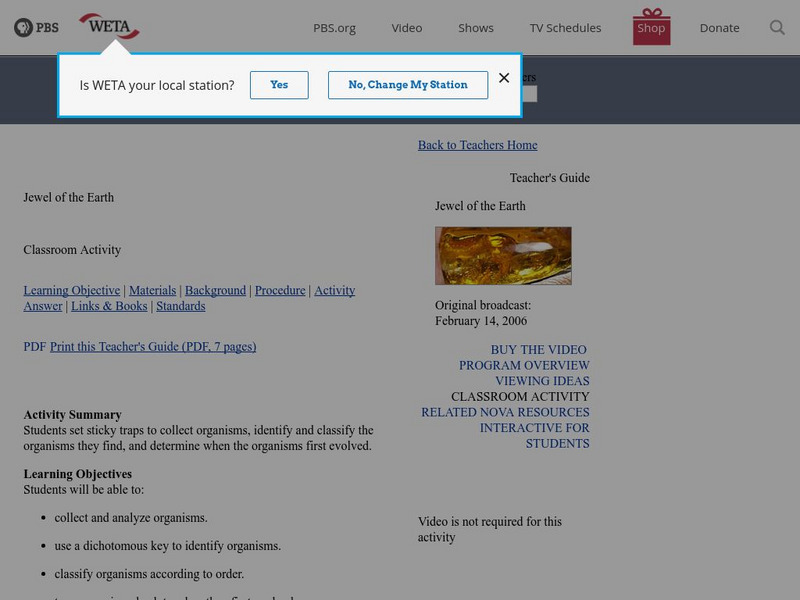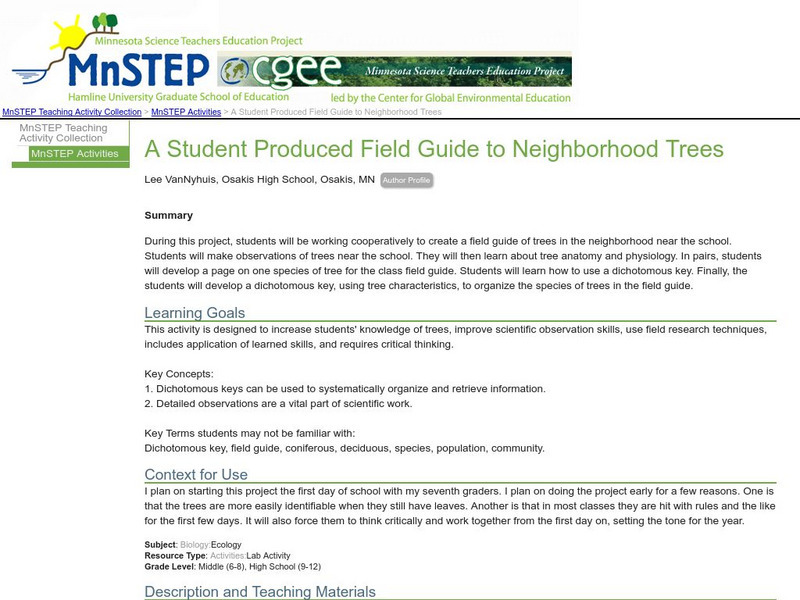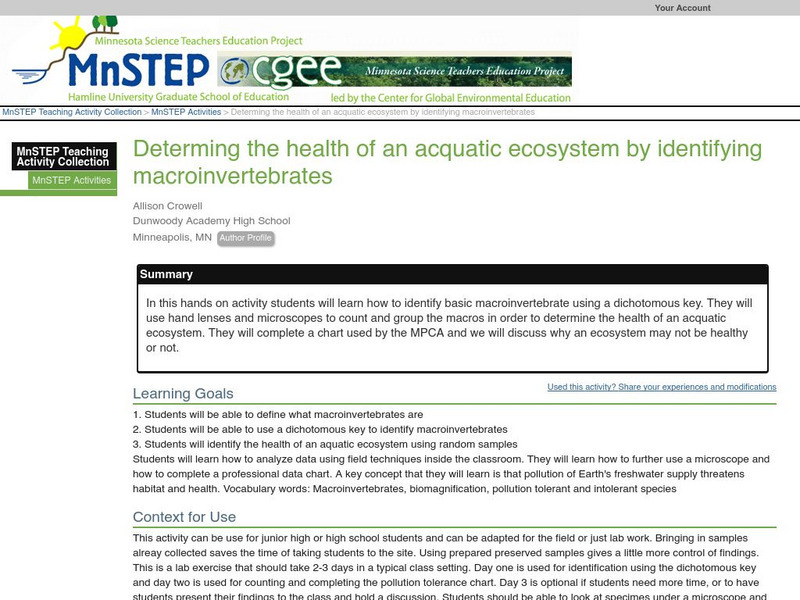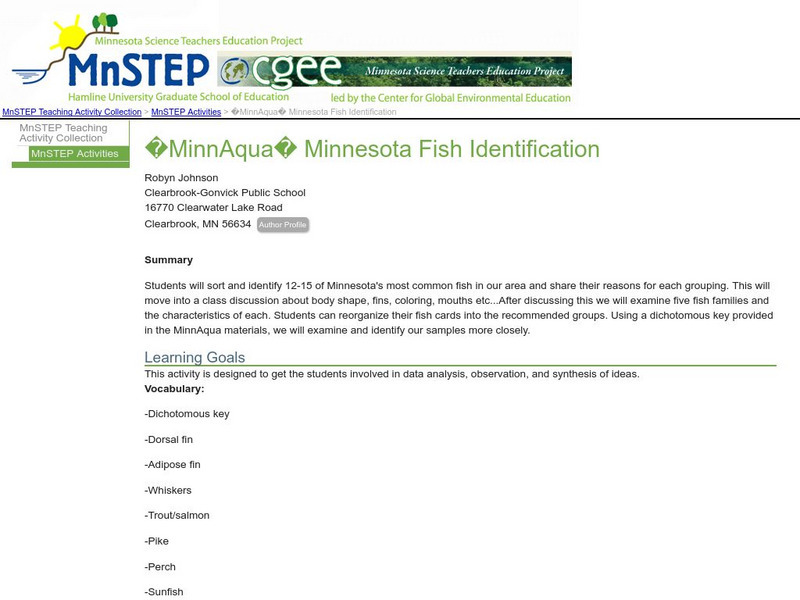Hi, what do you want to do?
Curated OER
Micro-Ecosystems
Young scholars create a sustainable, self-contained ecosystem in a ten-gallon aquarium.
Curated OER
The Tree Detective - Basic Dendrology
Students identify tree species by their leaf characteristics. In this dendrology lesson, students learn leaf vocabulary and collect leaves. They identify the leaves using the leaf characteristics and the vocabulary that they learned.
Curated OER
School Site Ecosystem
Fourth graders are introduced to the concept of ecosystem; specifically, the interrelationships among plants and animals within an ecosystem, and their relationships to the environment in which they live and interact.
Curated OER
Leaf Collection
Students examine the tree species in Pennsylvania. In this Pennsylvania tree lesson plan students use field guides to assist them in identifying tree species.
Curated OER
What Critters Tell Us About Water Quality: A Macroinvertebrate Lesson
Learners explore our ecosystem by investigating the quality of our water. In this aquatic insect instructional activity, students examine a group of random insects collected from different streams and ponds in the area. Learners record...
Curated OER
Collecting and Pressing Plants
Learners engage in a lesson that is concerned with the study of native plants and classifying them according to a kind. They press them into a journal while identifying them according to species. Students compile the samples into a...
Curated OER
INSECTS
Seventh graders select, collect, and classify various insects by constructing an apparatus from materials that aid in the capture and containment of the insect.
Curated OER
Sea Turtles
Students investigate eight different species of sea turtles while being involved in classroom lecture and video presentation. The characteristics used to identify sea turtles is taught to help students identify unknown species.
Curated OER
Lamarck Is Dead!
Learners read Lamarck's obituary and respond to questions. They discuss the four laws from Lamarack's studies. Students apply this information to scientific theories in general.
Curated OER
Benthic Macroinvertebrates
Students survey and describe a stream ecosystem. They sample the benthic macroinvertebrate populations of a given stream and determine community structure through the use of the Chandler Index and a species diversity index.
Science Education Resource Center at Carleton College
Serc: Investigating Trees: Using a Dichotomous Key to Identify Local Tree Types
Using their own classification methods students will identify the types of trees found around their school and neighborhoods. Students will then present their classification methods to the class. Later students will use dichotomous tree...
Science Education Resource Center at Carleton College
Serc: Creation of Dichotomous Keys From a Bio Blitz
An outdoor lab where students investigate the environment and decide a method of survey to identify trees in their area. To finish the exercise they will create a dichotomous key of the ten they identified.
Science Education Resource Center at Carleton College
Serc: Using and Creating a Dichotomous Key
Young scholars will investigate classification through a sorting activity and discus real-life evidence of classifying objects.
Science Education Resource Center at Carleton College
Serc: Introduction to Dichotomous Keys
This activity serves as an introduction to the classification of plants and animals or trees. Students will investigate how to classify objects based on their similarities and differences. They will use technical writing to explain their...
Other
Siemens Science Day: Life Science: The Key to It All
In this hands-on science activity, students will create their own unique creatures as well as dichotomous keys so that classmates can identify the creature.
PBS
Nova Teachers: Treasures of the Great Barrier Reef: Classroom Activity
This activity involves having students classify nine fish according to various physical characteristics. They can also develop a key to identify the fish.
Other
Science4 Us: Materials
Students use a dichotomous key to sort materials into natural and man-made and sort further using the adjectives rough and smooth; this activity builds both science and language skills as students classify materials and build deeper...
PBS
Pbs Teachers: Jewel of the Earth
Collect and analyze organisms and use a dichotomous key to identify and classify the organisms. Research the evolutionary history of organisms.
Science Education Resource Center at Carleton College
Serc: A Student Produced Field Guide to Neighborhood Trees
During this project, students will be working cooperatively to create a field guide of trees in the neighborhood near the school. Students will make observations of trees near the school. They will then learn about tree anatomy and...
Science Education Resource Center at Carleton College
Serc: Identifying Macroinvertebrates to Determine Health of Aquatic Ecosystem
In this hands on activity students will learn how to identify basic macroinvertebrate using a dichotomous key. They will complete a chart used by the MPCA and we will discuss why an ecosystem may not be healthy or not.
Utah Education Network
Uen: Classifying Conundrum
In this activity, 4th graders will identify plant characteristics from different environments.
Science Education Resource Center at Carleton College
Serc: Investigating Plant Life in Our Nature Center
For this Nature Center activity, students will apply knowledge from our classifying living things unit. They will compare what they already know about leaves to actual leaf samples. After collecting 5 leaves and keeping them in a...
Science Education Resource Center at Carleton College
Serc: Identifying Plant Family Characteristics
Students make observations of similarities and differences between three types of garden plants to determine why they are grouped together in one plant family.
Science Education Resource Center at Carleton College
Serc: Mn Step: Minn Aqua Minnesota Fish Identification
Describes a lesson in which students sort fish cards into groups based on the characteristics of the fish. The MinnAqua resources referred to can now be found at...















